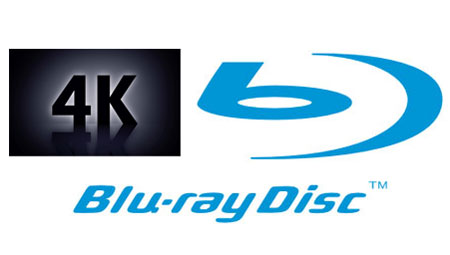Singulus Technologies, a manufacturer of optical disc replication equipment, appears to have blown the cover of the next-gen 4K Blu-ray Disc format ahead of any official announcement by the Blu-ray Disc Association (BDA). The company has just announced the BLULINE III, a machine capable of replicating triple-layer 100GB Blu-ray Discs.

Given the recent consumer electronics industry rush of 4K Ultra HD TVs, and the HDMI Group’s announcement of its new UHD-capable HDMI 2.0 interface, it’s really not much of a stretch to imagine what the new larger capacity discs will be used for. Indeed, Singulus’ own web site states that
Only Blu-ray Discs with these [100GB] capacities will enable movie experiences in the new ultra high definition format 4K in “movie quality” in the future.
Although the Blu-ray Disc Association were said to be investigating potential future moves, the announcement of actual manufacturing equipment for higher capacity Blu-ray Discs is the first solid indicator the public has been given that Ultra HD video on Blu-ray will indeed become a reality. Although the updated Blu-ray Disc standard has yet to be announced officially by the BDA, such a move is surely forthcoming: after all, there would be no other use for a machine capable of manufacturing factory-pressed 100GB discs if a hardware update was not imminent!
Consumers have actually had access to triple-layer 100GB and 128GB Blu-ray Discs for some time already, in the form of the BDXL format. However, in its current incarnation, BDXL is a format designed for burning discs for home use, the workings of which are different to the mass-produced, factory-pressed discs we use to watch “pre-recorded” Hollywood films. It’s possible that BDXL computer drives could be updated to read the factory pressed triple-layer BD100 discs with firmware updates.
What also isn’t clear is what will be done on the software side to enable 4K Blu-ray playback. The use of the next-generation video encoding standard, H.265/HEVC (High Efficiency Video Coding) is highly likely. With that said, given the huge capacity of the newly outed 100GB triple-layer discs, encoding 4K content using the existing H.264/AVC format – as HDTVTest has done during its own ultra high-definition hardware tests – may be an option available to those producing content destined for the new discs.
Streaming service Netflix showed off internet-delivered 4K/UHD video to a Samsung UHDTV at CES 2013 back in January this year, and indeed, some Ultra HD 4K TVs do feature H.265/HEVC decoders which apparently will be used for this purpose. The new Blu-ray standard – once announced and on the market – will also compete with Sony’s Video Unlimited 4K download service. However, just as is the case with current streaming services, these delivery methods will be bottlenecked by the limited speed and bandwidth caps imposed by current broadband connections, meaning that optical disc will once again provide a superior quality experience (albeit a less instantly accessible one).
Sony and Panasonic also recently announced a 300GB optical disc, which many took as an indicator that the same technology would find itself in consumer hands later. However, this technology is designed for archival, rather than consumer use, and is separate to the Blu-ray format.
Source: CDRinfo.com – thanks to Ron Jones for the heads-up.